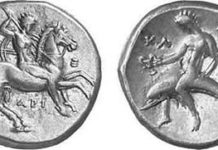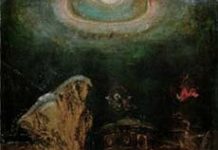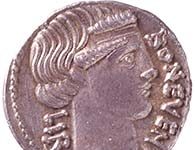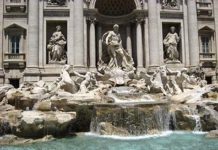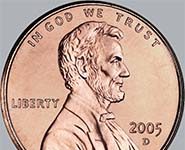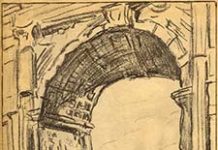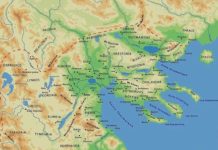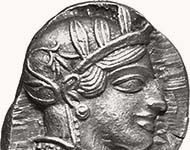Ursula Kampmann
And this is where Aristotle was wrong…
Aristotle, in his work on the structure of the Tarentine government, likewise described the coins of the city. He remarked that they depicted Taras, son of Poseidon, riding a dolphin. Was he right? Or is there another, more possible, option?
Sigismondo Malatesta – Condottiere and Ruler of Rimini
In 1462, there was a great fire to be witnessed in Rome: Pope Pius II burnt the effigy of Sigismondo Malatesta, once beloved son and captain-general of the Holy Roman Church. Who was this man? A beast? The anti-christ? Or simply a child of one’s times?
Taxes for Rome
Hands up anyone who hasn’t come to be annoyed by the tangled mass of regulations accompanying our tax collection. Perhaps at different times, the situation had been better… Perhaps in Rome?
A temple for Honos
A coin of Trajan shows a temple for Honos in great detail. Honos? You don’t know this Roman deity? Join us and you will get to know her...
The Puteal Scribonis
Most probably every collector of Roman Republican coins is aware of the pieces of Scribonius Libo showing the Puteal Scribonis. But hands up anyone who really knows what that is...
Coins in the fountain well: Trevi Fountain in Rome
Do you know actually, who invented the fashion to throw a coin into the Trevi Fountain in Rome in order to return to the Eternal City? If you do not, you will find the answer within this article...
Cent, Nickel, Dime – what is depicted on American coinage and why?
Everybody all over the world is acquainted with the American dollar. But did you ever have a closer look at the three smallest denominations of US coinage? They represent the American conception of the world, too. At the risk of boring our constant readers from the United States, here is a short comment on the subjects pictured there...
A King at a pinch – the stolen coin collection of Victor Emmanuel III of Italy
A King dealing in coins – that sounds preposterous? Well, in 1944 the satirical magazine “Nebelspalter” published a caricature of the same tenor which was understood throughout Europe. Victor Emmanuel’s passion for coins was proverbial. He is said to have collected 120,000 pieces as the foundation of the most important publication of Italian coinage, the CNI, whose first volume was published exactly 100 years ago...
The coins of Philipp II of Macedonia
Philipp II ranges amongst the most important rulers of Antiquity. He transformed the small and endangered Macedonia into one of the most powerful kingdoms of the Ancient world. His coins circulated in all of Greece and bought him what he needed - loyalty, politicians, mercenary soldiers...
The Delian League and the Athenian Money
In 479 BC the Greeks defeated the Persians at Plataiai. At that time nobody dared to hope that the fight was so soon to end. On the contrary, every Greek city was afraid of the Persian king, who had vast resources at his disposal. He was feared to raise another army in order to conquer the whole of Greece. Something had to be done to prevent that.



